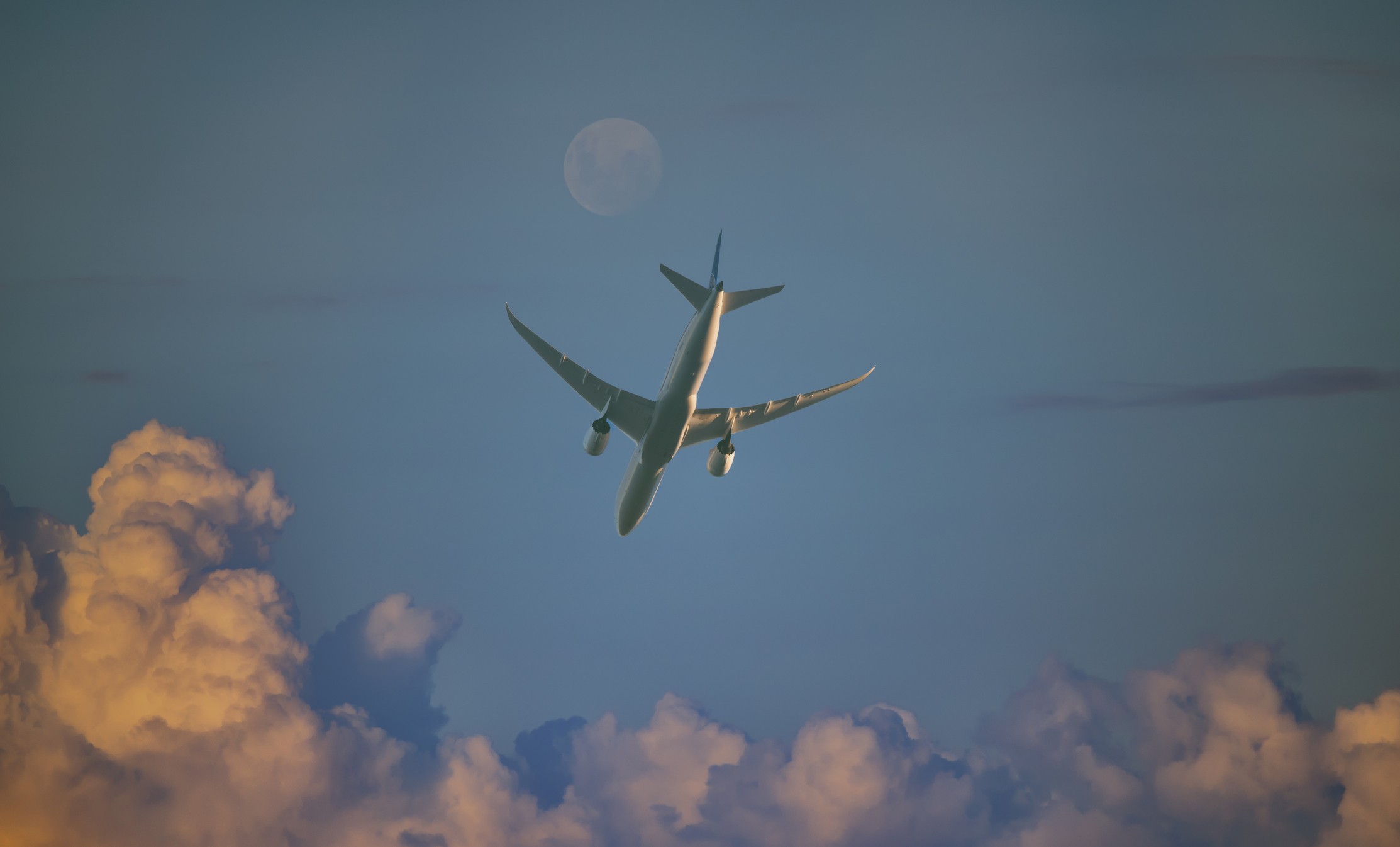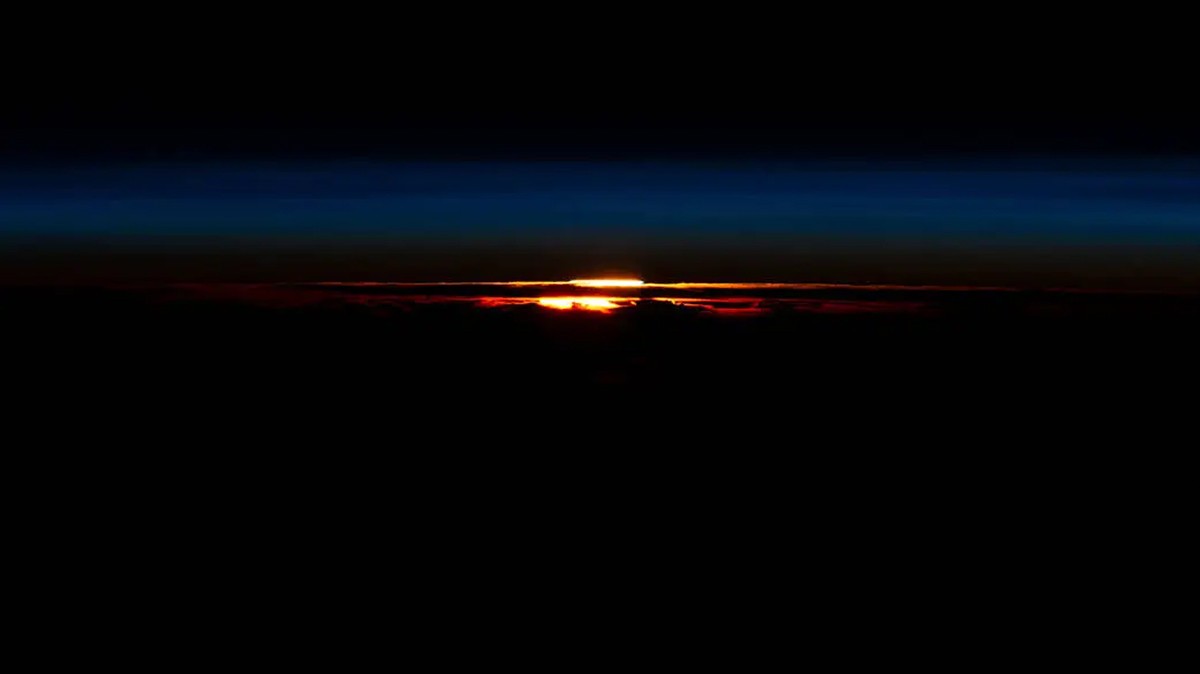Traveling the world is a dream for many, and How Long Does It Take To Travel The World is a common question. SIXT.VN provides customized travel solutions to make your dream a reality. From convenient airport transfers to comfortable hotel bookings and exciting tours, we ensure a seamless and unforgettable adventure. Discover the world with SIXT.VN and unlock your travel potential. Consider factors such as travel speed, mode of transportation, and routes to explore the globe.
1. Understanding the Earth’s Dimensions for Global Travel
Earth isn’t just a place; it’s an invitation to explore. Orbiting spacecraft reveal that the Earth’s circumference measures approximately 40,070 kilometers (24,898 miles) around the equator. The radius stretches 6,378 kilometers (3,963 miles), giving a diameter of 12,756 kilometers (7,926 miles). These measurements provide a basis for calculating travel times. However, it’s worth noting that the polar radius is slightly less, at 6,357 kilometers (3,950 miles), as Earth isn’t a perfect sphere. For simplicity, let’s follow in the footsteps of Phileas Fogg and assume a route around the equator. To keep our calculations straightforward, we’ll imagine Earth as a solid sphere, replacing the oceans with walkable or drivable terrain.
 Image of Earth captured during Apollo 10, 18 May 1969. Credit: NASA / restored by Toby Ord
Image of Earth captured during Apollo 10, 18 May 1969. Credit: NASA / restored by Toby Ord
1.1. Why Equatorial Circumference Matters for Round-the-World Journeys
Why focus on the equator? Because it’s the longest distance around the Earth, making it the ultimate challenge for any global traveler. Whether planning a leisurely stroll or a high-speed dash, knowing the equatorial circumference sets the stage for adventure. This measurement, essential for calculating the duration of any round-the-world trip, turns the abstract idea of global travel into a tangible goal, offering a starting point for planning and dreaming.
1.2. Impact of Earth’s Imperfect Shape on Travel Calculations
Though we often picture Earth as a perfect sphere, its slight bulge at the equator and flattening at the poles influence travel distances. This imperfect shape means that routes closer to the poles are shorter, and equatorial routes are longer. Recognizing this nuance ensures more precise travel planning, especially when meticulous timing is essential. In reality, this imperfect shape adds depth to how we perceive our planet, influencing navigation, mapping, and our overall understanding of Earth’s geography.
2. How Long Would It Take to Walk Around the World?
Walking around the world is quite a commitment! At an average walking speed of 4.82 kilometers per hour (3 mph) for adults, circling the globe would take approximately 8,313 hours and 20 minutes. That’s just under a year of continuous walking. According to research from Medical News Today in 2023, consistent walking speed is crucial for estimating travel time. However, considering the longest recorded time a person has gone without sleep is about 264 hours, as noted by Healthline, driving might be a more practical option.
 It would take over 8,000 hours to walk around the world! Credit: Alavinphoto / Getty Images
It would take over 8,000 hours to walk around the world! Credit: Alavinphoto / Getty Images
2.1. Breaking Down the Walking Time: Hours, Days, and Months
Let’s break down the walking time to truly grasp the scale of this challenge. 8,313 hours translates to roughly 346 days if walking continuously. Realistically, including rest, meals, and sleep, this journey could stretch well over a year. This detailed breakdown offers a practical look at what it would take to walk around the world.
2.2. The Feasibility of Walking Non-Stop: Human Limits
Non-stop walking is a fascinating thought, but human limitations quickly come into play. The world record for the longest time without sleep is about 11 days, as reported by Healthline. Sleep deprivation and fatigue would certainly become major obstacles in an attempt to walk around the world continuously. It’s more feasible to consider walking in stages, incorporating regular rest and recovery periods.
2.3. Comparing Walking to Speed-Walking: Elite Athlete Times
Even the fastest speed walkers face significant challenges when covering vast distances. Yohann Diniz, the world-record holder for speed-walking 50 kilometers, completed the distance in 3 hours, 32 minutes, and 33 seconds. Maintaining that pace, he could theoretically walk around the Earth in approximately 2,839 hours. However, such intense speeds are unsustainable for extended periods, highlighting the need for even elite athletes to balance speed with endurance and recovery.
3. How Long to Drive Around the World?
Driving offers a faster way to circumnavigate the globe. If you could maintain a constant speed of 160 kilometers per hour (100 mph), driving around the equator would take about 250 hours. This calculation presumes ideal conditions, such as consistent terrain and no stops. Driving is significantly faster than walking. According to a study by the World Road Travel Organization in 2022, driving offers more flexibility than flying for exploring diverse landscapes.
3.1. Calculating Driving Time at a Constant Speed
Maintaining a steady speed of 160 kilometers per hour (100 mph), the 40,070-kilometer journey around the equator would take roughly 250 hours. This calculation is straightforward, but the real world presents many variables. This simple calculation highlights the potential for rapid travel. However, one must consider real-world factors.
3.2. Real-World Driving Challenges: Terrain, Traffic, and Regulations
In reality, numerous factors affect driving time. Terrain changes, from smooth highways to rough dirt roads, can dramatically alter speeds. Traffic congestion in urban areas can cause delays. Different countries have varying traffic laws and speed limits, which impact overall progress. According to the International Drivers Association in 2023, familiarizing oneself with local traffic rules is essential for global driving adventures. Accounting for these challenges provides a more realistic estimate of the time required for a global driving trip.
3.3. Essential Preparations for an Around-the-World Driving Adventure
Before embarking on an around-the-world driving adventure, careful preparations are crucial. Securing the necessary visas and permits, ensuring vehicle maintenance, and planning detailed routes are all vital steps. Cultural awareness is also essential for respectful and enjoyable travel. The Adventure Travel Trade Association noted in 2024 that comprehensive preparation enhances the safety and richness of the travel experience. These preparations are fundamental to turning a dream into a safe and fulfilling reality.
4. How Long Does It Take to Fly Around the World?
Flying significantly reduces the time required to circle the Earth. Commercial passenger planes typically cruise at speeds between 925 and 965 kilometers per hour (575-600 mph). Thus, flying around the world could take less than 42 hours. According to Boeing’s commercial aircraft division in 2023, modern aircraft are designed for efficiency and speed. Avoiding imprisonment and other challenges, as in Jules Verne’s Around the World in Eighty Days.
 Commercial passenger planes could travel around the world in less than 42 hours. Credit: Boeing746 / Getty Images
Commercial passenger planes could travel around the world in less than 42 hours. Credit: Boeing746 / Getty Images
4.1. The Impact of Commercial Flight Speeds on Global Travel Time
Commercial flights have revolutionized global travel. Cruising at speeds of 925-965 kilometers per hour (575-600 mph), these flights dramatically cut down travel time. This speed enables travelers to traverse vast distances in a matter of hours, connecting people and cultures worldwide. The efficiency of commercial air travel has made the world more accessible.
4.2. Sub 24-Hour Travel: Supersonic and Hypersonic Flight
Achieving around-the-world travel in under 24 hours requires speeds far exceeding those of commercial aircraft. Covering 40,070 kilometers in a single day necessitates traveling at 1,670 kilometers per hour. This is faster than the speed of sound, approximately 1,225 kilometers per hour, according to NASA. Reaching such speeds demands supersonic or even hypersonic jets.
4.3. Exploring the Fastest Aircraft: NASA X-43 and MiG-25 Foxbat
The NASA X-43, an uncrewed aircraft, holds the record for the fastest jet-powered flight, achieving speeds of Mach 9.3, or 9.3 times the speed of sound. At 11,484 kilometers per hour (7,136 mph), it could circle the world in just under 3.5 hours. The Mikoyan-Gurevich MiG-25, or ‘Foxbat’, a fighter jet capable of Mach 3.2, could complete the journey in just over 10 hours.
5. Famous Round-the-World Trips
Many have been inspired to travel around the world, including Jules Verne, whose 1872 book spurred numerous circumnavigations.
 French ultra long-distance runner Serge Girard begins his tour around the world in Paris, 31 january 2016. Credit: ALAIN JOCARD/AFP via Getty Images)
French ultra long-distance runner Serge Girard begins his tour around the world in Paris, 31 january 2016. Credit: ALAIN JOCARD/AFP via Getty Images)
5.1. Historical Voyages: Sir Francis Drake’s Circumnavigation
Between 1577 and 1580, Sir Francis Drake took 1,018 days to voyage around the globe. Though his expedition was primarily aimed at raiding Spanish ports, it remains a significant historical circumnavigation. Drake’s voyage not only demonstrated maritime capabilities but also expanded European knowledge of the world.
5.2. Record-Breaking Journeys: Serge Girard’s Foot Circumnavigation
The current world record for the fastest circumnavigation on foot is held by Serge Girard, who took 434 days to travel 26,245 kilometers. Girard’s incredible endurance and determination highlight the physical limits of human travel. His record stands as a testament to what can be achieved through dedication and perseverance.
5.3. Concorde’s Speed Record: Circumnavigating in 31 Hours
In 1995, Concorde made history by flying around the Earth in 31 hours and 27 minutes, carrying 98 passengers and crew. This supersonic flight showcased the potential for ultra-fast global travel. The Concorde’s speed and luxury made it an icon of aviation history.
6. Unconventional Perspectives: Space Station and Lunar Circumnavigation
Beyond Earth’s surface, space offers unique perspectives on circumnavigation.
 An orbital sunset as seen from the International Space Station, 24 June 2023. Credit: NASA
An orbital sunset as seen from the International Space Station, 24 June 2023. Credit: NASA
6.1. The International Space Station: 90-Minute Circumnavigation
The International Space Station (ISS) can travel the circumference of the Earth in approximately 90 minutes. This means that for every 24 hours, the crew on board experience 16 sunrises and sunsets. According to NASA’s space exploration division in 2024, the ISS provides unparalleled views and insights into our planet.
6.2. The Moon’s Orbit: A 27.3-Day Journey Around Earth
The Moon, Earth’s natural satellite, completes its orbit around the Earth every 27.3 days. This continuous circumnavigation offers a different perspective on cosmic movement. The Moon’s consistent orbit is a fundamental aspect of our planet’s environment.
7. Planning Your Own Round-the-World Trip
Planning your own round-the-world trip involves several key steps. Start by defining your priorities, setting a budget, and determining the duration of your trip. Next, research potential destinations and create a detailed itinerary. Booking flights, accommodations, and tours in advance can save time and money.
7.1. Setting Realistic Timelines and Budgets
Setting realistic timelines and budgets is crucial for a successful round-the-world trip. Consider your financial resources and the amount of time you can dedicate to the journey. Account for potential unexpected expenses and delays. The Travel Budget Association reports in 2023 that flexible budgets and timelines reduce stress and enhance the overall travel experience.
7.2. Choosing Destinations and Itineraries
Selecting destinations and creating a well-planned itinerary are essential for an enjoyable round-the-world trip. Research diverse locations, cultural sites, and natural wonders to curate an unforgettable experience. Consider the best times to visit each destination to optimize your travel plans. According to the World Tourism Organization in 2024, well-researched itineraries lead to richer and more satisfying travel experiences.
7.3. Visa Requirements and Health Precautions
Navigating visa requirements and health precautions is a critical aspect of planning international travel. Ensure you have the necessary visas for each country on your itinerary. Consult with healthcare professionals regarding required vaccinations and health guidelines. The International Travel Health Association recommends in 2023 that travelers stay informed about health risks and take preventive measures to ensure their safety and well-being.
8. SIXT.VN: Your Partner for Seamless Travel in Vietnam
SIXT.VN offers a range of services to make your travel experience in Vietnam seamless and enjoyable. From airport transfers to hotel bookings and guided tours, we provide convenient and reliable solutions for all your travel needs. According to the Vietnam National Administration of Tourism in 2024, using local travel services enhances the quality and authenticity of your travel experience.
8.1. Airport Transfers: Reliable and Convenient
SIXT.VN offers reliable and convenient airport transfer services, ensuring a smooth start and end to your trip. Our professional drivers provide timely pickups and drop-offs, making your journey hassle-free. These transfers provide peace of mind and allow you to focus on enjoying your travel experience.
8.2. Hotel Bookings: Wide Range of Options
SIXT.VN provides a wide range of hotel booking options to suit every budget and preference. From luxury hotels to budget-friendly accommodations, we offer choices in prime locations. These services save you time and ensure comfortable stays.
8.3. Guided Tours: Exploring Vietnam with Local Experts
Our guided tours offer immersive experiences, allowing you to explore Vietnam with knowledgeable local experts. Discover cultural sites, historical landmarks, and natural wonders with our expertly curated itineraries. These tours provide deeper insights and unforgettable memories.
9. Top Destinations to Include in Your Round-the-World Trip
When planning a round-the-world trip, certain destinations are must-visits due to their cultural significance, natural beauty, and unique experiences.
9.1. Iconic Landmarks: The Great Wall of China and Eiffel Tower
The Great Wall of China and the Eiffel Tower are iconic landmarks that should be included in your itinerary. These sites represent historical and cultural milestones. According to UNESCO in 2023, visiting these landmarks provides a profound connection to human history and achievement.
9.2. Natural Wonders: The Amazon Rainforest and the Grand Canyon
The Amazon Rainforest and the Grand Canyon are natural wonders that showcase the Earth’s stunning beauty. Exploring these locations offers unique adventures and breathtaking views. The World Wildlife Fund highlights in 2024 that visiting these sites supports conservation efforts and raises awareness about environmental protection.
9.3. Cultural Hotspots: Kyoto, Japan and Marrakech, Morocco
Kyoto, Japan and Marrakech, Morocco are cultural hotspots that provide rich and immersive experiences. These cities offer a blend of historical traditions, vibrant markets, and unique cultural practices. The Cultural Heritage Society emphasizes in 2023 that visiting these places fosters cross-cultural understanding and appreciation.
10. Optimizing Your Trip with Travel Tips and Hacks
Optimizing your round-the-world trip involves using travel tips and hacks to enhance your experience and save time and money.
10.1. Packing Light: Essential Items and Strategies
Packing light is essential for convenient and efficient travel. Focus on bringing versatile items that can be mixed and matched, and utilize packing cubes to maximize space. Travel experts at Condé Nast Traveler recommend in 2024 that travelers pack only essential items to avoid unnecessary baggage fees and hassle.
10.2. Utilizing Travel Apps: Navigation and Language Translation
Leveraging travel apps can greatly enhance your navigation and communication in foreign countries. Use apps for maps, language translation, currency conversion, and local transportation. According to a survey by Travel + Leisure in 2023, travel apps increase traveler confidence and reduce stress.
10.3. Staying Connected: Wi-Fi and Local SIM Cards
Staying connected is crucial for accessing information, communicating with loved ones, and managing travel arrangements. Utilize Wi-Fi hotspots and consider purchasing local SIM cards for reliable internet access. The Global Connectivity Association suggests in 2024 that reliable internet access enhances safety and convenience during international travel.
FAQ: Frequently Asked Questions About Round-the-World Travel
1. What is the average cost for a round-the-world trip?
The average cost for a round-the-world trip can range from $15,000 to $60,000, depending on travel style, destinations, and duration.
2. How long should I plan for a round-the-world trip?
A typical round-the-world trip lasts from three months to one year, allowing ample time to explore various destinations.
3. What are the essential documents for a round-the-world trip?
Essential documents include a valid passport, necessary visas, travel insurance, and copies of important documents stored separately.
4. How can I stay healthy while traveling around the world?
Stay healthy by getting necessary vaccinations, maintaining good hygiene, eating balanced meals, and staying hydrated.
5. What is the best time to start a round-the-world trip?
The best time to start depends on your chosen destinations, but spring and fall often offer favorable weather conditions in many regions.
6. How do I handle currency exchange rates during my travels?
Use travel apps or credit cards with no foreign transaction fees to manage currency exchange rates effectively.
7. What are some safe travel practices for a round-the-world trip?
Practice safe travel by staying aware of your surroundings, avoiding high-risk areas, and securing your belongings.
8. How can I minimize my carbon footprint during my trip?
Minimize your carbon footprint by choosing eco-friendly accommodations, using public transportation, and supporting local businesses.
9. What are some cultural etiquette tips for international travel?
Learn about local customs, dress modestly in culturally sensitive areas, and be respectful of local traditions and practices.
10. How can SIXT.VN help with my travel plans in Vietnam?
SIXT.VN provides airport transfers, hotel bookings, guided tours, and other travel services to ensure a seamless and enjoyable experience in Vietnam.
Ready to embark on your dream adventure? Contact SIXT.VN today to explore our comprehensive travel services. Let us handle the details while you create unforgettable memories. Visit SIXT.VN or call +84 986 244 358 to start planning now!
Address: 260 Cau Giay, Hanoi, Vietnam
Hotline/Whatsapp: +84 986 244 358
Website: SIXT.VN
Act Now! Visit SIXT.VN for exclusive deals on airport transfers, hotel bookings, and guided tours in Vietnam.



